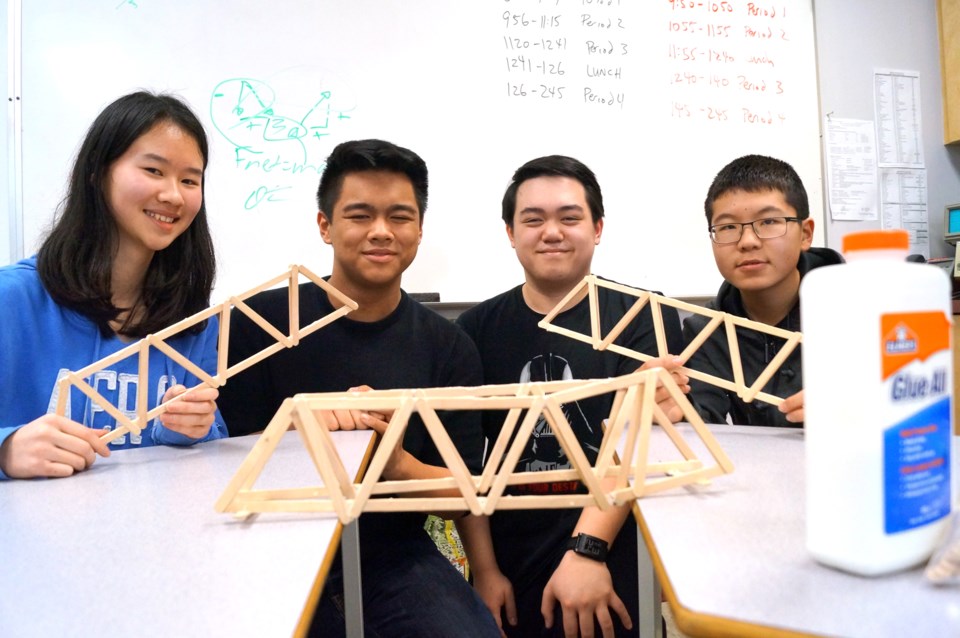Bridges aren’t exactly a Richmondite’s best friend; one shudders to think about leaving the city during rush hour. And these days, building new bridges over the Fraser River hasn’t exactly scored brownie points for the provincial government.
But let’s not give all bridges a bad name. These necessary structures are among modern civilization’s greatest engineering achievements.
In this light, the Richmond School District is hosting the Education Week Popsicle Bridge Competition to highlight the commitment schools, and their students, have to scientific achievement.
Richmond secondary’s Science Club is ground zero for an intense lead-up to the competition on March 5, at Aberdeen Centre
About two dozen club members, from all grades, pack into science teacher Jason Chow’s classroom each week to come up with the best bridge design that should stand to support close to 250 pounds of pressure.
That may not sound like much, but considering all the bridges are to be constructed using only 75 Popsicle sticks and Elmer’s white glue, you can imagine how important the design is.
“The first thing I thought to do was a truss bridge. We tried a few other designs, but the truss came out on top,” explained Grade 10 student Wesley Kao.
The key, said Kao, is creating strong bonds between the sticks. This means patience between gluing each piece together, allowing it to fully dry.
The winning bridge is the one that holds the largest load at failure. Sadly, all bridges will be destroyed, eventually.
The competition is seen as an outlet for science-minded students to go beyond learning in the classroom. Many, such as Kao, are highly-motivated.
“I’ve always had an interest in science and physics and also I want to be an engineer. My dad and grandpa were also civil engineers. I’m just into science,” said Kao.
The club is also a means for students to meet one another and form friendships.
So says biology expert and Grade 10 student, Carol Shen: “So far, all of my competitions have been physics-related, but it’s still fun. Because of the club, I’ve got to meet a few more people, and they’ve become really close friends.”
Chow said the social aspect of the club is important.
“Our team, in general, caters to a lot of different students. Some want to be involved, and their strength is in science. . . So they still want to be part of a team and they want to learn, so the science club provides that to them.”
Junior and senior teams compete in up to four competitions each year. The competitions include various science disciplines, including biology. For instance, students investigated a crime case and had to match DNA samples to solve it. There are also Earth sciences that students learn about.
“This is an extra opportunity to apply what you know. But it’s also just about learning, as well,” said Chow.
“However, I put a strong emphasis on the social aspect. They want to feel they belong. All kids do in that way. This is just another venue,” added Chow.



